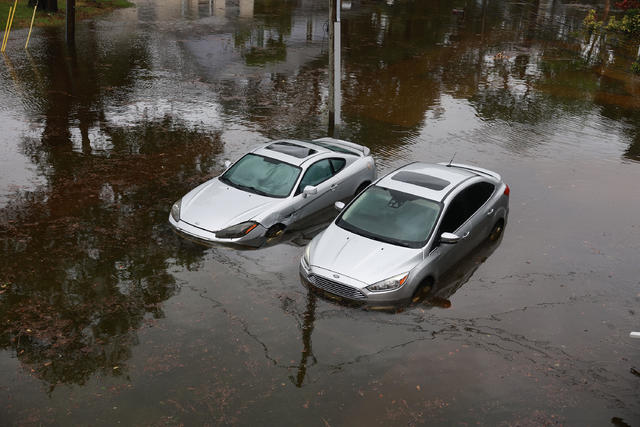Introduction
As electric vehicles (EVs) gain popularity for their environmental benefits and innovative technology, understanding their performance during extreme weather events, such as hurricanes, becomes increasingly important. Hurricanes present unique challenges, from flooding to high winds, that can affect all vehicles, but EVs have specific vulnerabilities and advantages. This blog explores how electric cars fare in hurricanes, offering insights into risks, preparations, and best practices for owners.
Risks Associated with Hurricanes
Flooding and Saltwater Exposure
One of the most significant threats to electric vehicles during hurricanes is flooding. Water can infiltrate the battery compartments and electrical systems, leading to potential damage. Saltwater is particularly corrosive; it can severely impact lithium-ion batteries, which are commonly used in EVs. Historical data from past hurricanes indicates that many vehicles submerged in saltwater suffer from long-term damage, even if they appear operational immediately after the storm.
Fire Hazards
Another risk associated with electric vehicles during hurricanes is fire hazards. In rare cases, water exposure can lead to thermal runaway—a condition where a battery overheats and potentially ignites. Incidents of EV fires have been reported following hurricanes, raising concerns about the safety of these vehicles in flooded conditions. Understanding these risks is crucial for EV owners living in hurricane-prone areas.
Pre-Storm Preparations
Charging and Disconnecting
Before a hurricane strikes, it’s vital for EV owners to ensure their vehicles are fully charged. A full battery can provide a crucial lifeline for evacuations or powering essential devices if the power goes out. However, it’s also essential to disconnect charging cables before the storm hits to avoid risks associated with flooding and electrical surges.
Relocation Strategies
Relocating electric vehicles to higher ground is another important preparation step. Owners should consider moving their cars away from low-lying areas prone to flooding. Additionally, securing vehicles against wind damage—such as moving them into garages or using protective covers—can help minimize potential harm.
During the Storm: Best Practices
Avoiding Charging
During a hurricane, it’s advisable to avoid charging electric vehicles if power outages occur. Charging systems may become unstable during storms, posing risks of electrical surges that could damage the vehicle’s battery or electrical components.
Monitoring Conditions
Keeping an eye on water levels and storm developments is essential for safety. EV owners should stay informed through local news updates and weather alerts to assess whether it’s safe to remain near their vehicles or if evacuation is necessary.
Post-Storm Actions
Inspection and Safety Checks
After the storm passes, conducting thorough inspections of electric vehicles is crucial. Owners should look for signs of water damage or corrosion, particularly in battery compartments and electrical systems. It’s advisable to have a professional inspect the vehicle if there are any concerns about its safety or functionality.
Dealing with Potential Fire Risks
If an EV has been submerged or shows signs of damage, it’s essential to handle it with caution. Water-damaged batteries can pose fire risks; therefore, owners should avoid starting the vehicle or attempting repairs themselves. Contacting emergency services or professionals experienced in handling electric vehicle issues is recommended.
Case Studies and Historical Context
Hurricane Ian (2022)
Hurricane Ian brought significant challenges for electric vehicle owners in Florida. Reports indicated that many EVs were damaged due to flooding, leading to concerns about long-term battery health. Additionally, several incidents of fires were reported among submerged vehicles, highlighting the need for heightened awareness regarding post-storm inspections.
Hurricane Helene (2024)
The more recent Hurricane Helene raised further questions about fire risks associated with flooded electric vehicles. Emergency responders noted an increase in incidents where submerged EVs caught fire days after the storm had passed. This has prompted discussions about improving safety protocols for EVs in flood-prone areas.
Conclusion
In conclusion, while electric cars offer many benefits, their performance during hurricanes poses unique challenges that owners must navigate carefully. From understanding the risks associated with flooding and fire hazards to implementing effective pre-storm preparations and post-storm inspections, being proactive can significantly enhance safety and minimize damage. As climate change continues to increase the frequency and intensity of hurricanes, ongoing research and development will be crucial in improving the resilience of electric vehicles against extreme weather conditions. For EV owners in hurricane-prone areas, staying informed and prepared is key to surviving the storm.

